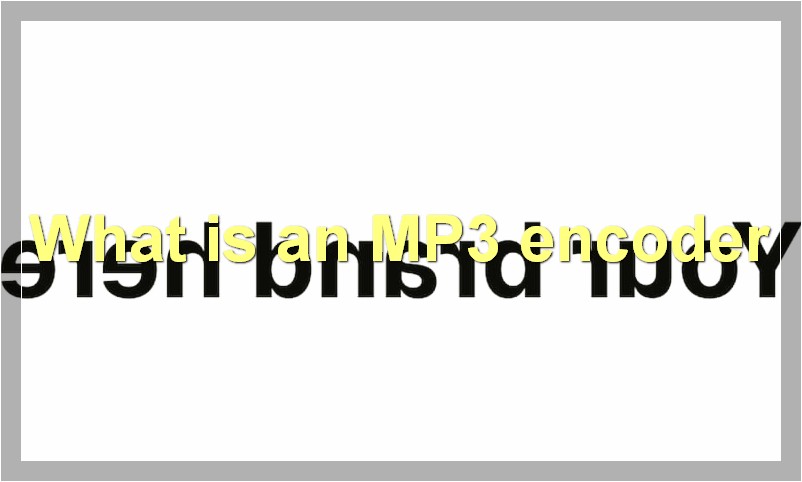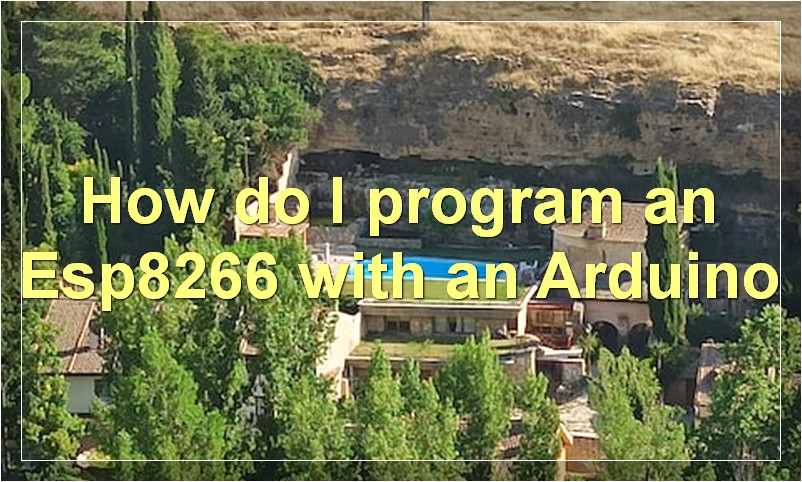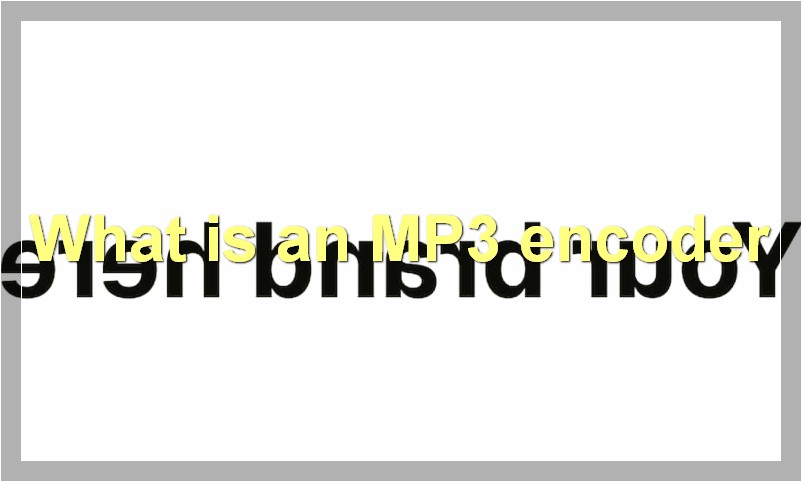If you’re interested in learning how to program an Esp8266, you’ve come to the right place. In this article, we’ll show you how to program an Esp8266 with and without Arduino.
What is an Esp8266?
An Esp8266 is a low-cost Wi-Fi microchip with full TCP/IP stack and microcontroller capability produced by Shanghai-based Chinese manufacturer, Espressif Systems. The chip first came to the attention of Western makers in August 2014 with the ESP-01 module, made by a third-party manufacturer Ai-Thinker.
Espressif Systems began production of the ESP8266 in 2014. The ESP8266 was designed for mobile devices and Internet of Things applications, providing Wi-Fi connectivity to embedded systems. The chip includes an 80 MHz microcontroller with a built-in TCP/IP stack and can be programmed with the Arduino IDE.
The ESP8266 was originally designed to be used as a serial WiFi adapter for cell phones and other devices. However, its low cost and ease of use has led to it being adapted for use in a wide variety of projects. These include everything from home automation systems to wearable technology.
What is an Arduino?

An Arduino is a computer that can be used to control electronic devices. It can be used to control things like lights, motors, and sensors. It can also be used to create games or to control robots.
What are the benefits of programming an Esp8266 with and Without Arduino?
When it comes to programming an Esp8266, there are benefits to both using and not using Arduino. Here are some of the key benefits to consider:
Benefits of Using Arduino with Esp8266
1. Increased Efficiency – When you use Arduino with your Esp8266, you can take advantage of the increased efficiency that comes with having a dedicated IDE and compiler. This can lead to faster development times and fewer errors.
2. More Support – The Arduino community is large and supportive, so if you run into any issues while programming your Esp8266, chances are someone has already encountered and solved the problem.
3. Simplicity – Arduino makes working with complex hardware like the Esp8266 simpler by providing an easy-to-use interface. This can be a great benefit for those who are just getting started with programming hardware.
Benefits of Not Using Arduino with Esp8266
1. Cost – One of the main reasons people choose not to use Arduino with their Esp8266 is because it adds an extra cost to the project. If you’re on a budget, you may want to consider avoiding Arduino altogether.
2. Flexibility – Another advantage of not using Arduino is that it gives you more flexibility in terms of the tools and programming languages you can use. For example, if you’re more comfortable working with Python, you can program your Esp8266 directly without having to go through the Arduino IDE.
3. Power Consumption – One downside of using Arduino is that it can add unnecessary power consumption to your project. If you’re looking to minimize power consumption, you may want to consider avoiding Arduino altogether.
How can I program an Esp8266 without using Arduino?
If you’re looking to get started with programming the ESP8266 Wi-Fi module, but don’t want to use Arduino, you’re in luck. In this tutorial, we’ll show you how to program the ESP8266 without using Arduino IDE, but instead using the popular and powerful Visual Studio Code.
The ESP8266 is a low-cost Wi-Fi chip with full TCP/IP stack and microcontroller functionality. Despite its low price, it’s a capable little device that can be used for a wide variety of applications. It’s most commonly found on development boards like the NodeMCU and ESP8266-01, which make it easy to get started with programming the ESP8266.
However, if you’re not using Arduino and instead want to program the ESP8266 using Visual Studio Code, you’ll need to install a few things first. Namely, you’ll need to install the Visual Micro plugin for Visual Studio Code and download the ESP8266 board files.
Once you have the Visual Micro plugin installed and the ESP8266 board files downloaded, you’re ready to go! In this tutorial, we’ll show you how to set up your programming environment and then how to program the ESP8266 using Visual Studio Code.
So let’s get started!
Is it possible to program an Esp8266 without an Arduino?
Yes, it is possible to program an Esp8266 without an Arduino. This can be done using a variety of programming languages and tools, including the Arduino IDE.
How do I program an Esp8266 with an Arduino?

If you’re looking to get started programming an Esp8266 with an Arduino, there are a few things you’ll need to do first. In this article, we’ll go over how to set up the Arduino IDE for programming an Esp8266, and how to program it with a basic sketch.
First things first, you’ll need to download and install the Arduino IDE. You can find the latest version of the IDE here. Once you have the IDE installed, open it up and go to File > Preferences. In the preferences window, scroll down to the “Additional Board Manager URLs” field and enter the following URL:
http://arduino.esp8266.com/stable/package_esp8266com_index.json
Click “OK” to close the preferences window. Next, go to Tools > Board > Boards Manager. In the Boards Manager window, type “Esp8266” into the search field and install the “ESP8266 by ESP8266 Community” package.
With the Arduino IDE set up for programming an Esp8266, you can now write your sketch and upload it to the board. For this example, we’ll just blink an LED on GPIO2.
First, we’ll declare some variables for our LED pin and for the delay time in between blinks:
int ledPin = 2; // GPIO2 – Pin D4 on WeMos D1 R2
int blinkDelay = 1000; // Blink delay in milliseconds
void setup() {
// Set the LED pin as output
pinMode(ledPin, OUTPUT);
}
void loop() {
digitalWrite(ledPin, HIGH); // Turn on the LED
delay(blinkDelay); // Wait for blinkDelay milliseconds
digitalWrite(ledPin, LOW); // Turn off the LED
delay(blinkDelay); // Wait for blinkDelay milliseconds
}
What is the difference between programming an Esp8266 with and without Arduino?
When it comes to programming an Esp8266, there are two ways to go about it. You can either use an Arduino or not. So, what’s the difference?
If you’re new to the world of programming and electronics, then using an Arduino is probably the best way to go. Arduino is a simple platform that makes it easy to get started with coding and hardware. It’s great for beginners because it takes care of a lot of the complicated stuff for you.
However, if you’re more experienced, then you might want to ditch the Arduino and program the Esp8266 directly. This will give you more control and flexibility over your project. Plus, it’s usually cheaper to just buy an Esp8266 than it is to buy an Arduino and all the extra bits and pieces that you need to get it up and running.
So, there you have it! The main difference between programming an Esp8266 with and without Arduino is experience level and cost. If you’re a beginner, go with Arduino. If you’re more experienced, go without.
Which is better for programming an Esp8266, Arduino or no Arduino?
Programming the Esp8266
The Esp8266 is a low cost WiFi module that can be integrated into many IoT applications. It can be programmed using the Arduino IDE, but it can also be programmed without an Arduino. So, which is better for programming an Esp8266, Arduino or no Arduino?
There are pros and cons to both approaches. Programming the Esp8266 with an Arduino allows you to take advantage of the Arduino ecosystem and all of the libraries that have been developed for it. It also means that you can use the Arduino IDE, which is a very user-friendly development environment. On the other hand, programming the Esp8266 without an Arduino requires a bit more work, but it opens up more possibilities in terms of what you can do with the device.
If you’re just getting started with the Esp8266, then programming it with an Arduino is probably the best approach. Once you’re more familiar with the Esp8266 and its capabilities, you may want to explore programming it without an Arduino.
Why would I want to program an Esp8266 with an Arduino?
Programming an Esp8266 with an Arduino can be a great way to get started with Internet of Things (IoT) projects. The Esp8266 is a low-cost WiFi module that can be used to add WiFi functionality to your Arduino projects. programming the module with the Arduino IDE, you can quickly and easily create IoT projects that can be controlled remotely over the internet.
In this article, we’ll show you how to program an Esp8266 with an Arduino so you can get started on your IoT journey. We’ll cover everything you need to know, from setting up the hardware to writing the code. By the end, you’ll have a working project that you can control over the internet. So let’s get started!
How would I go about programming an Esp8266 with an Arduino?
If you’re looking to get started with programming an Esp8266 with an Arduino, then this guide is for you. We’ll go over everything you need to know in order to get started, including what tools you’ll need and how to wire up your Esp8266. Let’s get started!
The first thing you’ll need is an Arduino board. Any Arduino board should work, but for this guide we’ll be using the Arduino Uno. You’ll also need an Esp8266 module. We recommend the ESP-01 module, as it’s easy to work with and is widely available.
Next, you’ll need to connect your Esp8266 module to your Arduino board. There are a few different ways to do this, but the most common method is to use a breadboard. Simply connect the VCC pin on the Esp8266 to the 5V pin on the Arduino, the GND pin on the Esp8266 to one of the GND pins on the Arduino, and then connect the RX pin on the Esp8266 to the TX pin on the Arduino.
Now that your hardware is all set up, it’s time to move on to the software side of things. The first thing you’ll need to do is download and install the Arduino IDE. This is a free piece of software that will allow you to write code for your Arduino board and upload it to the board.
Once the Arduino IDE is installed, open it up and navigate to the “Tools” menu. In the “Tools” menu, make sure that you have selected the “Board” and “Port” that correspond to your Arduino board. For example, if you’re using an Arduino Uno, you would select “Arduino/Genuino Uno” as your Board and “/dev/cu.usbmodem14101” as your Port.
With the correct Board and Port selected, go ahead and click the “Upload” button in the Arduino IDE. This will compile your code and upload it to your Arduino board. Once the code has been uploaded, you should see the LED on your Esp8266 module blink once every second. Congratulations, you’ve just programmed your first Esp8266 with an Arduino!




